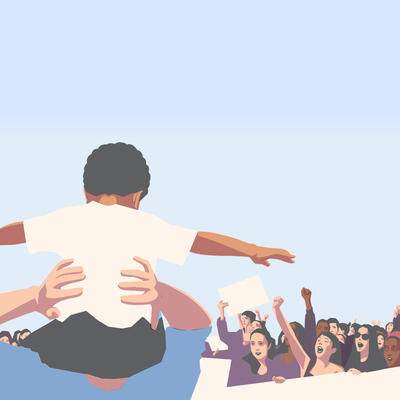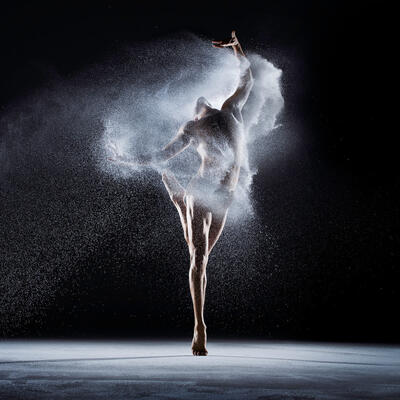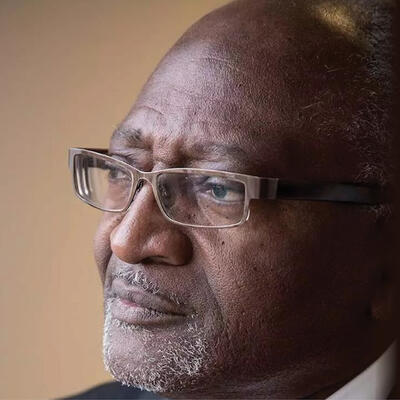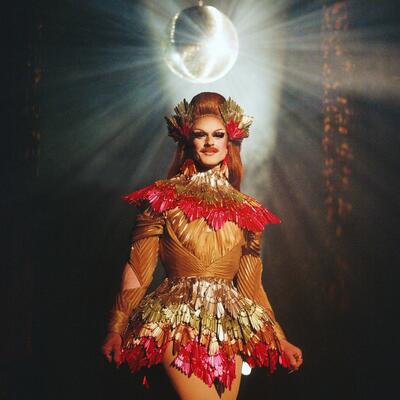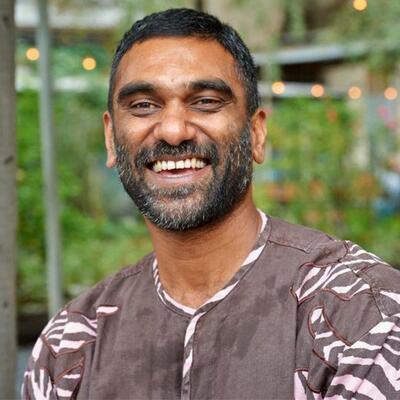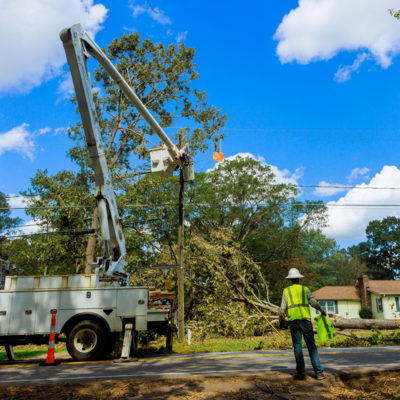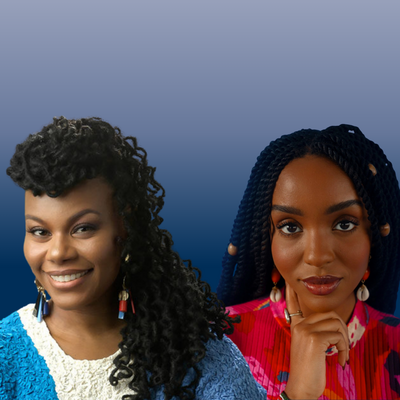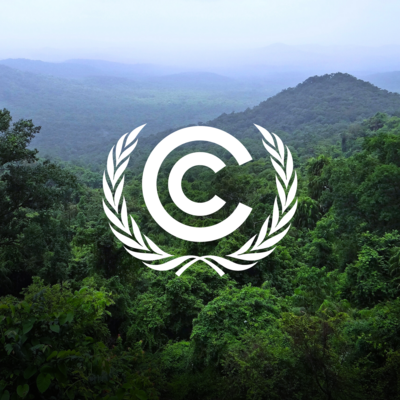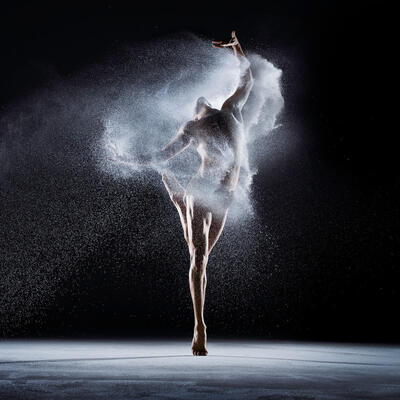
REWIND: Racism and Climate / Climate Change Through the Artist’s Eyes
Guests
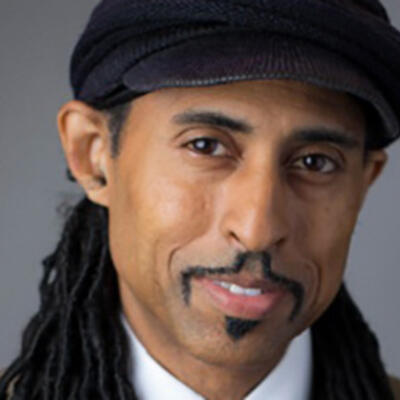
Mustafa Santiago Ali
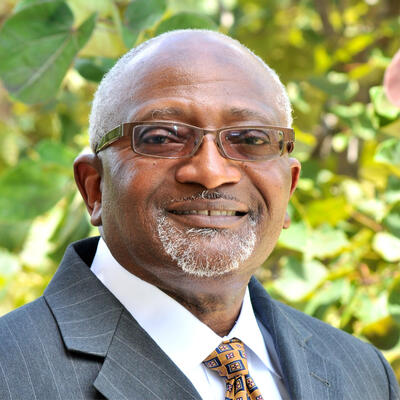
Robert Bullard
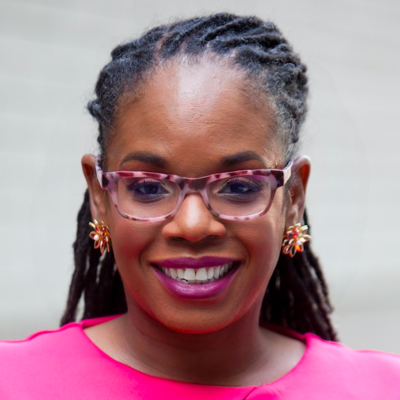
Glynda Carr
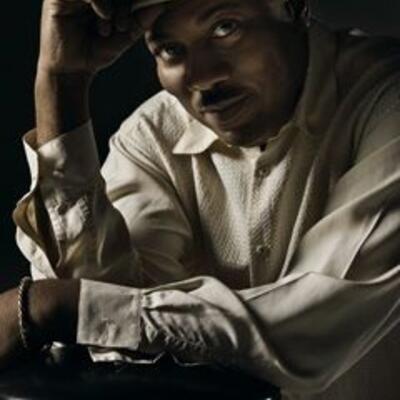
Alonzo King
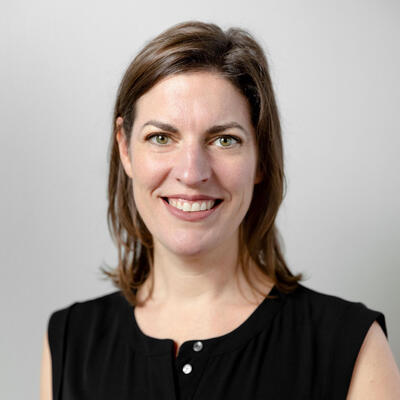
Nora Lawrence
Summary
The national outrage sparked by the murder of George Floyd has cast a spotlight on systemic racism that has permeated this country for centuries. Environmental efforts are no exception. Air pollution, severe weather and the economic upheaval brought on by climate change, impacts black and minority communities first and worst.
“We want economically thriving, educated and healthy, safe communities,” says Glynda Carr, founder and CEO of Higher Heights for America. “And part of the reason why we haven’t been able to achieve that is because of the ability not to have brave conversations about the inequalities in this country.”
Mustafa Santiago Ali now works for the National Wildlife Federation, but he started his environmental justice career at the Enviromental Protection Agency under the first President Bush. He says that that agency often fell short when it came to addressing the needs of communities of color.
“Anytime policy is being created it should be coming from local people, local communities, local organizations,” he says, “And the most important thing was that community speak for themselves.
“So if we can get politicians whether on the federal level or the state level or the county or the local level to understand that basic concept, we would stop wasting money and we would stop making mistakes by creating policy that is not meeting the needs of everyday people.”
In the second half of the program, Greg Dalton talks with two artists whose work is designed to help us see, feel and process the emotions brought up by climate disruption.
Alonzo King, founder and choreographer of Alonzo King LINES Ballet company, sees the union of art and science as the perfect balancing act between logic and feeling.
“There is nothing that exists that you can create that does not have science -- it's impossible,” says King. “There's nothing that doesn't have music. It's impossible.”
Nora Lawrence, senior curator for the Storm King Art Center, believes that art can sometimes reach people in ways that reports and statistics cannot. She recalls the words of Hara Waltz, an artist who participated in Storm King’s 2018 exhibition on climate change:
“’If I'm writing a study about climate change I'm going to ...give you some data and some graphs and it’s gonna be rather dry,’” Lawrence quotes. “’I'm not going to cry, but I might if I'm giving you a work of art about climate change. I might show more of myself; I might do something different that inspires something else in you besides a certain part of your brain.‘”
King often uses dance to explore art, beauty and humanity in the age of climate disruption. His work is grounded in his childhood. Growing up in rural Georgia, he was nurtured by a deep connection to nature
“I think that human beings, we are out of rhythm when we live in cities and we see skyscrapers instead of the sky,” King says. “It's curious that people who are farmers, agrarian or they’re in nature all the time -- that is art. That is the great work of the Divine Mother.”
Related Links:
Higher Heights for America
National Wildlife Federation – Equity and Justice
Dumping in Dixie: Race, Class and Environmental Quality (Robert Bullard)
16 essential books about environmental justice, racism and activism (EcoWatch)
Selection from Alonzo King Lines Ballet's 'Ocean' | KQED Arts Exclusive
Indicators: Artists on Climate Change (Storm King Art Center, 2018)
Adam Schoenbert’s Losing Earth is a call to action (SF Classical Voice)
"Racism and Climate" was first broadcast on July 3, 2020.
"Climate Change Through the Artist's Eyes" was generously underwritten by the Sidney E. Frank Foundation and was first broadcast on August 28, 2020.
Full Transcript
Greg Dalton: This is Climate One. I’m Greg Dalton. In the right hands, art can help us understand our own feelings about climate disruption. But that doesn’t always mean it’s changing hearts and minds.
Nora Lawrence: I think sometimes if it really hits people over the head; it doesn't mean it's affecting people. [:07]
Greg Dalton: On today’s program, we revisit our conversation about connecting with the natural world through art.
Alonzo King: I think that human beings, we are out of rhythm when we live in cities and we see skyscrapers instead of the sky. [:10]
Greg Dalton: And we look back at a discussion that explores the often fraught relationship between environmentalism and communities of color.
Mustafa Santiago Ali: That same pollution that is killing black and brown folks in the city is the same pollution that is impacting the national parks that you say that you care about so much. [:10]
Greg Dalton: Confronting racism and climate, and seeing both through the artists’ eyes. Up next on Climate One.
---
Greg Dalton: racial injustice climate disruption and COVID-19. How can art help us process turbulent times?
Climate One conversations feature all aspects of the climate emergency, the individual and the systemic, the exciting and the scary. I’m Greg Dalton.
Greg Dalton: The story of climate change is typically told in the language of facts and figures, graphs and charts. But choreographer Alonzo King sees no distinction between logic and feeling.
Alonzo King: There is nothing that exists that you can create that does not have science, it's impossible. There's nothing that doesn't have music, it's impossible. [:09]
Greg Dalton: Through dance, music, sculpture and other media, artists can reach people on a deeper and more emotional level, designing cultural moments that can bring us together - and bring us to tears.
Nora Lawrence: If I'm writing a study about climate change I'm going to ...give you some data and some graphs and it’s gonna be rather dry. I'm not going to cry, but I might if I'm giving you a work of art about climate change. [:12]
Greg Dalton: Nora Lawrence is Senior Curator for Storm King Art Center in upstate New York. I spoke with her and Alonzo King earlier this year about the ways that art can speak to us about climate change. We’ll hear that conversation later in the program.
Greg Dalton: But first – events of the past year, including the murders of George Floyd, Breonna Taylor and other Black citizens by police, have shone a glaring spotlight on the racism embedded in every aspect of American society. Environmental efforts are no exception. Communities of color are impacted first and worst by air pollution, climate-induced weather events and economic upheaval.
Greg Dalton: Earlier this year as Black Lives Matter protests were making headlines across the country, I spoke with Mustafa Santiago Ali, Vice President of Environmental Justice at the National Wildlife Federation, Glynda Carr, president and CEO of Higher Heights for America, and Dr. Robert Bullard, distinguished Professor of Urban Planning and Environmental Policy at Texas Southern University in Houston and recognized as the father of environmental justice.
Greg Dalton: We began the discussion by connecting with our breath – something privileged people usually take for granted. COVID-19, which attacks the lungs, and the suffocation of Eric Garner and George Floyd at the hands of police, have focused on breath and given it new meaning. Here’s Dr. Bullard.
PROGRAM PART 1
Robert Bullard: The right to breathe clean air is a basic human right. And when you start taking away that right to breathe you’re taking away humanity and when you're taking away just every day 24/7 of violence of dumping pollution into neighborhoods through smokestacks and families are waking up 2:30 in the morning because some accident because of plume that is rushing through their neighborhoods and they don't know if -- and they're told to shelter in place and they don't know if they’re going to live or die. That's violence. It’s the same kind of violence that we see the police violence that's snuffing out black lives and killing people and creating this mental stress and trauma. When we see those videos daily and running looping, looping, looping that is causing trauma, you know, which is PTSD. That kind of violence has taken its toll. And I think everybody knows it now these demonstrations are really showing that not just in this country around the world that this is unjust this is barbaric and we need to stop it right now.
Greg Dalton: Mustafa Santiago Ali, I was recently listening to an interview with Brian Stevenson and he was talking about how going to other countries, particularly I guess Germany how they, you know, is actively encourage people to learn about the Holocaust. So there’s this national reckoning across generations. And it seems like this country hasn't had that reckoning yet. I’d like to hear your thoughts on whether America has really put this legacy of racism front and center like it should have.
Mustafa Santiago Ali: Well, I think America is afraid to because if you put it front and center. If you integrate it into the educational system as a part of our history, both the dark days and where we are in this present moment then you have to do something about it. And it's very difficult for America to admit that it was a part of genocide for our indigenous brothers and sisters. It's hard for America to also talk about snatching the lives of Africans and bringing them to this country so that you can have free labor. It's difficult for our country to also focus on the fact that they brought Chinese brothers and sisters over here to build the infrastructure on the railroads and then turned their back on them after that and ostracized them.
So for America to truly be able to highlight the injustices the systemic racism that we’re talking about today would then mean that you also have to figure out a way that you are going to address both those past and present injustices that continue to happen. And that may come in the form of reparations that may definitely come in the form of making sure that there is legislation both on the federal and the state level that rectifies those situations. And that also means that there has to be resources placed into that overall equation because words without resources have little meaning.
So I think it’s difficult for our country up to this moment to be able to actually honor the lives that have been sacrificed so that this country could be in the positioning that it is. But I will also say that this is a new moment this is a new time and young people and many others are refusing to have the 21st century look like the previous centuries. So we have to see what that's going to actually look like. And of course, mobilization building coalitions and many of the other aspects that are necessary for true change to happen will have to all come together.
Greg Dalton: Glynda Carr, the climate and environmental conversation is often separate from the conversations about housing, jobs, equity, those sorts of things. How do you see them as connected, I mean, racism is everywhere and carbon pollution is everywhere they’re both systemic problems but they’re often thought of as separate.
Glynda Carr: At the end of the day, you know, we will continue to have siloed conversations. I do think for us to step into this moment where we can truly reimagine an America we can all believe in, we have to look at the intersectionality of this moment. And at the end of the day, black women want what white women want who want what black men want who want what white men and our other communities of color want; we want economically thriving, educated and healthy, safe communities. And if we can meet, you know, in the intersection to be able to talk about the nuances of that and why we haven't been able to achieve that. And part of the reason why we haven’t been able to achieve that is because of the ability not to have brave conversations about the inequalities in this country.
And so what has happened, you know, with the I think the intersection when you talk about meeting at the intersection in 2020. We are in 2020 with the backdrop of COVID-19 and like literally breaking open the racial disparities on mainstream TV and our social platforms about how COVID-19 is impacting communities of color. Then insert a continued drumbeat on the attack of blackness and then insert and yet another conversation about the Amy Coopers of the world racializing the ability for a black man to walk in Central Park as a birdwatcher. All of those pieces have now hit an intersection that we can truly have conversations about how do we talk about the intersectionality of raising, you know, raising the next generation of whole Americans. And that has to be a connection about my ability to economically thrive, my ability ensure that my children are educated to imagine a world where we are all safe and that it's not just the color of our skin that dictates our ability to walk down the street and not be afraid of not being able to come home.
==================================
Greg Dalton: You’re listening to a Climate One conversation about racism and climate change.
I’m Greg Dalton, and my guests are Dr. Robert Bullard of Texas Southern University, Glynda Carr of Higher Heights for America, and Mustafa Santiago Ali of the National Wildlife Federation.
Greg Dalton: Mustafa previously worked at the U.S. Environmental Protection Agency for twenty-four years. But he has been outspoken about the fact that when it comes to meeting the needs of communities of color, the EPA has fallen short.
========================================
Mustafa Santiago Ali: I've often said that anytime policy is being created it should be coming from local people, local communities, local organizations and should be evaluated by those same organizations to make sure that it's meeting the needs. And we should not necessarily be having people have to come to Washington. You should be in their communities in their meetings listening, that’s the first thing. And then sitting down with folks and following through with the translation of what they are asking for. And that is true whether we’re in Appalachia, we’re in the Rust Belt we’re on the Gulf Coast no matter where we are, we have to make sure that that’s actually happening. And I think it doesn't matter what administration it is, you know, folks sometimes fall short. Now of course this administration the words falling short does not even begin to equate, you know, the lack of understanding, vision and just the basicness that is needed just for survival. But yes, you know, we have to make sure that we are honoring the voice of the communities.
Dr. Bullard and many others when I was coming up, I always remember sitting outside listening to the meetings they were having. And the most important thing was that community speak for themselves. So if we can get politicians whether on the federal level or the state level or the county or the local level to understand that basic concept, we would stop wasting money and we would stop making mistakes by creating policy that is not meeting the needs of everyday people.
Greg Dalton: Carter Roberts is CEO of the World Wildlife Fund, one of the largest conservation organizations in the world with annual revenues of $300 million. After the national response to George Floyd's murder by police he held an all staff meeting to discuss the response of the organization which was founded by European monarchs. I asked him what he heard at that meeting.
[Begin Playback]
Carter Roberts: Our African-American leaders told stories they’ve never told in public before like that. That gave voice to what it was like to have a son or a husband or a nephew that you worried about every day. And they gave voice to the injustice that they face every day. And the response of our entire staff was a tidal wave of conviction that we need to do more to address that systemic justice.
I grew up in Atlanta in the city of Martin Luther King, and Andrew Young, and Ralph Abernathy. And I thought we had made more progress than we have. I’ve led an organization where we have devoted ourselves to working with indigenous people in communities in far-flung places like the Congo or Namibia, or Indonesia or Nepal and Bhutan or here at home in Alaska with tribal corporations and in the Northern Great Plains with tribes and ranchers. But it was clear to me we have not done enough with that most unique of American narratives, and experiences, and tension and roots which is the African-American experience. So, we have the largest social media presence of any environmental group and the largest brand.
Greg Dalton: Yes. And I think of the panda bear when you mentioned WWF for some reason I think of Prince Charles---
Carter Roberts: Yeah, thanks a lot. If we sound like an elite group of people saving fuzzy animals, but, you know, our mission has evolved over time. Our mission now is to build a future in which people and nature both flourish and the power in our organization is devolved to local offices. And, um, uh, that are led by local people, uh, all over the world.
Greg Dalton: Alex Ohanian, who is married to Serena Williams resigned from the board of Reddit, a company that he cofounded and encouraged the board, to place a black person in his place. He also donated $1 million to Colin Kaepernick’s, Know Your Rights Camp. Is it time for some white people on environmental boards to step off, and say replace me with a person of color?
Carter Roberts: I think it's time for white people like myself to ensure that the voices of African-Americans, people of color, indigenous communities are heard. And if that means stepping down from the stage that you're on and insisting that someone else take your place and I think it means boards to look in the mirror and see everything they need to do to make sure those voices are heard. I think this begins with listening.
[End Playback]
Greg Dalton: That was Carter Roberts, CEO of WWF. Dr. Bullard, I’d like to hear your response there to basically saying they overlooked people in their own backyard.
Robert Bullard: Well, you know, we have been saying that for decades. And educating students I taught at big white schools and I taught at historically black universities. And I encourage young people to do study abroad which is very important, but I also encourage them to explore the possibilities of what's on across town. And I think too often we have overlooked those issues that are close to home and somehow think that America has somehow overcome many of the issues that are being dealt with abroad such as poverty and hunger and looking at the issues of political prisoners, etc. The fact that we have been also in our environment justice movement have been talking about people speaking for themselves and developing resources that will have the capacity for people to speak for themselves. And we've really chastised a lot of these large green groups or they used to be in 90s we called them the Big Ten for sucking up all the green dollars from private foundations and supposedly doing the work for everybody. But we know the work that gets done in a lot of communities of color is done by communities of color, indigenous communities that get very little share of the dollars.
The studies done in 2002 people of color in environmental justice group got 4.5% of the green dollars. In 2020 I think it’s 15%. In 25 years this country will be majority people of color, we shouldn't wait to 2045 for us to transition to do justice in terms of not just diversity in terms of these large organizations on the boards and the staffs that’s okay. But we also should talk about diversifying the dollars; where the dollars flow should be where the needs are and build in those capacities the people of color groups and indigenous groups and women of color groups, etc. that's how you make change. And that's what we have been saying for a long time. Green 2.0 looking at diversity in the board rooms and then the board, etc. that's good. But we also be looking at with the money as folks will say on the street “where the money at” “who’s getting them dollars?” and how that flows. Makes a difference.
---
Greg Dalton: You’re listening to a Climate One conversation about racism and climate change. Coming up - addressing the need for more diverse leadership in environmental efforts.
Mustafa Santiago Ali: When we look at all the major green groups we don't see an African-American or Latinx person leading any of those. But the Heritage Foundation, they actually have an African-American woman who runs that...if they can do it, how is it that these organizations that focus on environmental conservation and climate can't do it? [:20
Greg Dalton: That’s up next, when Climate One continues.
---
Greg Dalton: This is Climate One. I’m Greg Dalton. We’re talking about race and climate in America. My guests are Dr. Robert Bullard, professor at Texas Southern University, Glynda Carr of Higher Heights for America, and Mustafa Santiago Ali of the National Wildlife Federation.
Greg Dalton: A Bloomberg report last year found that the fossil fuel industry is much more ethnically diverse than the clean energy sector. For example, the solar industry had a quarter of a million workers, seventy-five percent of whom are white. Another study reports that communities of color have a lower rate of rooftop solar adoption. I asked Mustafa to help explain the disparity.
PROGRAM PART 2:
Mustafa Santiago Ali: You know, there's a saying if you gonna talk about it be about it. And, you know, it’s really interesting that and I’ve said this before and I've had some pushback from some folks, you know, it’s not only workers inside of this new green, clean economy. People love for us to be focused on that and that is an important conversation. The other part of it is ownership because ownership then means that you can prioritize, you can make the right decisions and you can make sure that your services and your resources can then be anchored in certain communities and can revolve around inside of those communities. And that is a missing part of this conversation. It’s almost like the conversation that we have and Dr. Bullard touched on it a little bit there. When we look at all the major green groups we don't see an African-American or Latinx person leading any of those. But the Heritage Fund or the Heritage Foundation, they actually have an African-American woman who runs that.
So I don't agree with the policies that they support and they move forward on. But if they can do it how is it that these organizations that focus on environmental conservation climate can't do it?
Greg Dalton: Glynda Carr, on that point about the Heritage Foundation. Condi Rice is the new head of the Hoover Institute at Stanford University, very bastion of conservative thinking going back for decades. How do you feel about that? Is there an expectation that women of color are always progressive are you happy to get conservative women of color in power too?
Glynda Carr: Black women aren’t a monolithic voting bloc, we’re not a monolithic leadership. And for me a diverse decision-making table, regardless of where it fits in my political ideology still makes better decisions. And so being able to ensure that if we're looking at this just from a two political idealism spectrum conservative to progressives. We need to be pushing both spectrums to ensure that their leadership looks diverse and looks like America. And then for me is that I have no problem being able to be in a brave conversation where we push our counterparts to be better on issues or center our communities in those issues. So no, I think that we should ensure that each decision-making table is diverse so that she still has a unique experience as a black woman in America that she's bringing to a table that would without her leadership be void of a discussion about race and gender.
Greg Dalton: Mustafa Santiago Ali, you work with the National Wildlife Federation, which is sometimes called the hook and bullet crowd. You think of a white man in plaid with a shotgun. How are you reaching out to those people to connect on environmental issues and can you talk to them about environmental justice issues?
Mustafa Santiago Ali: Well, you know, we just had a vote at our board meeting and 97% of the board was in favor of the environmental justice movements that we're going forward on. We are the only organization that has a full environmental justice analysis that's taking place for all of its policy programs activities and budgeting decisions. So those are important steps. But, you know, we also got progressives that are part of the base. The 6 million members and you got the good old boys and good old girls who are part of it also. So what I do is I just keep it real with folks. That same pollution that is killing black and brown folks in the city is the same pollution that is impacting the national parks that you say that you care about so much. So you should be standing in solidarity with the folks who are dealing with the initial impacts because you’re getting the secondary impacts.
When we talk about water quality issues we go through the impacts that are happening again in black and brown and indigenous communities and that’s the same pollution once again that is impacting if you're a fisherman. So there is those intersection points that exist you just have to make the decision if you want to stand in solidarity with those who’ve been doing the work for decades or not. And we’re lucky that -- no, we’re not lucky, there is work that has been done by folks long before I ever got there to plant the seeds. So, you know, we are continuing to water those and move forward.
Greg Dalton: We’re going to end with two questions from YouTube. Both Sharon and Susan asked. “What gives you hope to continue to do this very critical work and do you have hope that we will actually move forward to equality?” Glynda, what gives you hope?
Glynda Carr: I don’t have children of my own but my godchildren give me hope. It is about ensuring that we are leaving an America that is better than what we came for. Like I had the privilege of growing up with four generations of my family. My great-grandmother who was born in 1895 and died shy of her hundredth birthday, Carrie Lee Dickens. We all live in the same community and so she dreamed a dream bigger for me and my brothers that she could've ever imagined, right, that we could have ever imagine. Here’s a woman that didn’t have a right to own property, only had a third grade education, but she knew that she could use her voice and her activism in a way that created a pathway better for me and my brothers. And I'll leave this with you - Ida B. Wells. She once said the way you right a wrong is to turn the light of truth on it. And I think that is what we continue to do and strive for.
Greg Dalton: Mustafa, what gives you hope?
Mustafa Santiago Ali: Seeing many different types of people coming together in authentic ways. And seeing people not just utilize words, but actually being willing to put their bodies on the line to make sure that justice becomes a reality that systemic racism ends. It reminds me of the pictures that I've seen, because I wasn't there at the time of the early days of the environmental justice movement in Warren County, North Carolina, when people were literally willing to lay down in the roads to stop trucks from coming into their communities. That level of dedication is the fire underneath of a movement. And I'm just blessed to be alive at this time and to be able to be a part of change that is actually happening.
Greg Dalton: Dr. Bullard, last word on hope?
Robert Bullard: Well, what gives me hope is that the young people that are fearless and willing to commit and risk it all for the sake of justice and dismantling this violent system of racism. And I see that happening right now. And I think this is the time to allow that space and that leadership to transition and transform this country. There’s enough of them to do it and enough of us together to do it.
==============================
Greg Dalton: This is Climate One. We’ve been talking about racism and the environment, with Glynda Carr, President and CEO of Higher Heights for America, Mustafa Santiago Ali, Vice President of Environmental Justice at the National Wildlife Federation, and Dr. Robert Bullard, Distinguished Professor of Urban Planning and Environmental Policy at Texas Southern University and recognized as the father of environmental justice.
Greg Dalton: We turn now to the role of the artist in interpreting climate disruption. My next two guests are finding ways through art to help us see, feel and express the complicated emotions brought up by an unstable climate.
Greg Dalton: Nora Lawrence is Senior Curator for the Storm King Art Center in the Hudson Valley outside of New York City. She curated Storm King's 2018 exhibition titled Indicators: Artists on Climate Change.
Greg Dalton: Alonzo King is a visionary choreographer and founder of Alonzo King LINES Ballet, a contemporary dance company that tours the world, often collaborating with artists from other realms. King grew up in Georgia, where his parents were active in the civil rights movement and worked with Martin Luther King. From an early age he was shaped by a community of idealism and activism, and nourished by a deep connection to nature.
==========================================
Alonzo King: I think that human beings we are out of rhythm when we live in cities and we see skyscrapers instead of the sky. One thing about a landscape when they’re so few anymore where there’s not electric lights and the stars become dominant at night and that carpet of sky is so humbling you feel minuscule and that is an important thing to feel. To feel that you are a grain of sand. And when you're in nature a lot there's a presence that slowly becomes apparent. At first, for most city dwellers when you get to nature you resist it takes a while you don’t even know you’re resisting. And then once you begin to let go and really surrender there is a presence that is felt, you step into a clock pattern, sunset and sunrise you can feel it before they even happen. And so there's a tuning in that tunes you into the cosmic clock. And that is really curing healing and informative.
Greg Dalton: Nora Lawrence, Storm King occupies about 500 acres of rolling hills and woods an hour outside New York City. How did you approach curating an exhibition that conveys the climate emergency through sculpture?
Nora Lawrence: I really felt like it was important to have the experience of climate be an embodied experience for Storm King visitors to use our beautiful site and our incredible site as a reminder of the stakes at play. We have all different types of natural environments at Storm King. We have two ponds, we have woods, we have great meadows, we have lots and lots of acres of native grasses. And so to really allow people to have what Alonzo I think was just describing, that experience of letting yourself go into nature while also thinking about the climate crisis was something that we didn't want to lose. That it wasn't about an indoor exhibition entirely that just had photographs of other places but really using our landscape and our environment as a way to let the climate crisis really hit home that it is here as well as elsewhere as well as in the Arctic, etc.
Greg Dalton: Alonzo King, when you think about climate change, what comes to mind for you as an artist. There's so much information and so much grief so much loss. How do you process that as an artist?
Alonzo King: I think that it reduces to something as complicated and as huge as it is it really in its reduction in which is the art process is which is so interesting is that you are talking about ideas that are so big and you have to reduce them into symbology, you have to make them a sort of an algebra, so that symbols are a reference for things that are much larger or words don't have the capacity to really grasp. But when you reduce what we've done to the climate what we've done to this planet it is selfishness and greed, plain and simple. Plain and simple, selfishness and greed. And it comes from the irony of not knowing who and what we are and thinking that ourselves is our bodies. And our bodies are not ourselves, they’re separate.
It also is an error in education because we don't know what human beings are. We’re not those bodies, we're souls playing roles. And if people were to recognize that human beings are valuable just the fact that they were born. I meet tons of people all the time who lament the fact that they feel worthless unless they have a degree from this place, unless they have this amount of money unless they have celebrity this is a horrible, horrible education. And so if this is the thinking of the masses and it is then we have set up a caste system where a certain kind of people are important and other people are less important or not important at all.
The same mechanism, the same thinking is what has made art elitist and separate an ivory tower away from the common herd of eaters and that has to be destroyed. I look at it that every human being if they are serious about their life is some kind of an artist. And my definition is and I think people really should look at words and find their own definition, meaning they should search for what is the essence of this idea. How do I see it? And I see that art is the knowledge of how things are done.
Bottom line whether that’s the art of government, whether it's crops, whether it’s how to treat people. And the highest art is the art of living. Emerson said so beautifully that the goal of art is higher than art itself, meaning that through that culture and practice we would reveal ourselves as human masterpieces and that is the aim. And so the separation of caste that we have set up in terms of humans being low and high, important, not important, same way that we do art it is a horror. And so we're missing an internal dialogue we’re missing what St. John calls the seven candles what yogis called the chakras in the body we’re missing that staircase of wonder and limitless potential and of course that will come to the fore through science through the practice of yoga through people who during this pandemic are forced to examine their lives. They can't run away into busyness. They have to examine what am I doing, what do I want to change, what do I want to contribute to the world. How do I want to depart from the world and look back and say well done? These are the important questions and this is the artistic life. This is the artistic way that kind of self-reform of the painting of the book of the choreography and the human being.
Greg Dalton: Nora, I’d like to get your response to a lot in there including how art can take something so massive as climate change and bring it down to a human scale and something we can respond to that’s more relatable, even if it's a little bit abstract.
Nora Lawrence: Absolutely and I think one work that was very well loved in our exhibition was by an artist named Jenny Kendler who I think did that also in a way that you were just speaking of, Alonzo. She used the term human exceptionalism. This idea that as humans we’re not allowing ourselves to be part of nature, right. And it lets us make these decisions to extract whatever we’re extracting from that mountain or kill all those fish or do whatever we need to do because we don't think of ourselves as just another species.
So she did this project called “birds watching” and she made a hundred large-scale replicas of the eyes of different birds that are endangered or threatened with extinction because of climate change within the next 50 years. And she put these hundred eyes out. So they have kind of this nature that is also looking back at you and they’re the eyes. So they're saying you know what’s different between you and the birds, right. How can you just make this category for yourself called bird and not even think that these are individuals as well. And I think that that helps people.
I think that zeroing in on these moments beyond what you referenced, Alonzo, at the beginning of what you're saying is just this kind of mass of horror, right, or this thing that’s just way too big for us to kind of keep in mind all the time. But if we look at different parts of it we can sort of use that almost as a synecdoche for the whole, right, and think about something bigger as well. And I think that's really important for people to be able to do and that’s something that art can help with.
---
Greg Dalton: You’re listening to a Climate One conversation about connecting with a heated world through art. Coming up, the role of artists in the pandemic era.
Nora Lawrence: I think people really crave art. And I don't think it's for an escapist reason, I think it's for...self-care. I think it's for enlightenment. I think it's for bridging something that speaks beyond today.[:14]
Greg Dalton: That’s up next, when Climate One continues.
---
Greg Dalton: This is Climate One. I’m Greg Dalton, and we’re talking about seeing climate change through the artist’s eyes. My guests are Alonzo King, choreographer and founder of Alonzo King LINES Ballet, and Nora Lawrence, Senior Curator at the Storm King Art Center. Before we continue our conversation about dance, sculpture and other art forms, let’s consider what music of climate change sounds like.
Greg Dalton: In 2018, classical composer Adam Schoenberg was commissioned by the San Francisco Symphony to write a percussion concerto. He didn’t have the environment in mind as a topic, but while on the plane to San Francisco, Shoenberg happened to read a New York Times Magazine article entitled “Losing Earth: The Day We Almost Stopped Climate Change.”
PROGRAM PART 3
Adam Schoenberg: And it was a horrifying article to read. And when I got off the plane I just knew that somehow the percussion concerto was going to be a response to the idea of climate change or really the fear of climate change, especially now being a father of two young boys.
It’s complicated as a composer because at the end of the day my job is still to write a piece of music that can stand on its own, just as a piece of music. And so the piece just begins with the bass drums literally traveling around the hall going “da-da-da-da-da-dum” and then a big grand pause of just silence. I disrupt the orchestra by literally stopping the orchestra. And those disruptions are meant to evoke all the natural disasters that are occurring around us so that we actually snap out of our own little bubble and start to be aware of what's happening around our surroundings. The second section is dubbed as this underwater world as if what's happening with our receding coastlines and the sea levels rising. And then the third movement or third section I should say is really the virtuosic dancelike movement which is really the call to arms where the orchestra wakes up sort of saying, what is going on?
What makes music so universal is that it is its own language that is its own vocabulary but it’s not a language or vocabulary that everyone has to speak you just sort of feel it. And so I think without any information you wouldn’t necessarily know that it's about climate change. But for me it's all about artistic integrity and doing work that you wholeheartedly believe in and feel that you can put your best foot forward.
[End Playback]
Greg Dalton: That was composer Adam Schoenberg who wrote the concerto Saving Earth performed by the San Francisco Symphony in 2019. Nora Lawrence, is art meaningful if you don't really know it's about climate can it really be a vehicle for social change, or is it just you know is this is an insider thing? I saw that piece by the way, we’re at the San Francisco Symphony it was astounding of course I was thinking with climate eyes. But if you didn’t have those climate eyes on I’m not sure that art would really enlighten you?
Nora Lawrence: I see it a little differently and maybe I just reverse it a bit. Because to me there's one thing that Adam said in there I just wanted to make a great piece of music or I needed to make the best piece of music I could. And that’s so critical. Bad art is never going to get anybody to figure out more about it. But good art I think, an art that really moves people and that he knows he put in his absolute best effort to that's what's going to get somebody they may not have come in, they don’t have a climate podcast, right. They didn’t come in with your perspective, but it doesn't mean that people aren’t going to learn a little bit more and find out a little bit more about that piece if it's great. So I think that can also be extremely helpful because I think one thing that can go wrong with climate art is I think sometimes if it really hits people over the head it doesn't mean it's affecting people. It doesn't mean it's really moving them or bringing them along with the artist or anything.
One artist in our show, Hara Waltz, she’s an artist she’s also a biologist. And one thing she had said is if I'm writing a study about climate change I'm going to give you an essay, I’m gonna give you some data and some graphs and it’s gonna be rather dry. I'm not going to cry, but I might if I'm giving you a work of art about climate change. I might show more of myself I might do something different that inspires something else in you besides a certain part of your brain.
Greg Dalton: Alonzo King, I’ve had many climate conversations where I’ve described things very similar to what Nora just said. Where climate started with physics and chemistry and outer space and it came to like smokestacks and tailpipes and the way we use energy and it’s very cerebral and technocratic. And I've often said we need arts and other we need to reach people's hearts and make them cry as Nora said. Is that right though? You might see it differently the rational mind reaches people in a different way than the emotion of art.
Alonzo King: I think that again for me it comes back to the human and we are imbalanced and we are denatured. We have a balancing act between logic and feeling. In their highest realms the union of the merging of those two, the marriage of those two again is met through intuition. There is nothing that exists that you can create that does not have science, it's impossible. There's nothing that doesn't have music, it's impossible. At one time music was categorized as a science in the Middle Ages. It was a science, that's what that category of study was.
So the idea of in a low stage the idea of logic can be dry, calculated, predictable. The idea of feeling can be indulgent, chaotic, illegible and those have to be elevated again through a human evolution of awareness. And the language of these communications be it science be it art -- because they’re really married they're not separate -- is again a problem of education. If I needed a docent to tell me about the experience I’m having that’s a problem because it either means that I'm not comfortable with my own intuitive perspective as every artist would want you to be. This is what I say but what do you say and what do you see? And famously as Chopin would say, listen to what Liszt is doing to my sonata! He was in awe of his interpretation.
And so that engagement comes from people who from childhood were seeing paintings were not going just to exhibits; they were painting themselves they were dancing themselves they were playing instruments. And the internal world of the awe and wonder of children gets cut off through that dangerous bridge of taking them out of wonder in what we call law and logic. But in reality they work together.
Greg Dalton: Nora Lawrence we’re at a time where a lot of people are reconsidering lots of things including art and whether it is an essential service now. Museums are closed, Alonzo just said art is vital, you know, we’ve cut arts education in a lot of America. So how is art being reconsidered now in the era of COVID?
Nora Lawrence: Wow. Okay. So, big question. I mean I think one thing is that artists are still working. People really, I think people really crave art. And I don't think it's for an escapist reason, I think it's for a whole number of reasons. I think it's for self-care. I think it's for enlightenment. I think it's for bridging something that speaks beyond today, right. I think there are so many things right now that it's so easy to get sort of just completely obsessed with and bogged down with and involved in. But art I think I love that, Alonzo, the way you spoke about the universe and these different stars and just thinking about how much more is out there is something that I think art can do for people. I was also thinking, you know, if you think macrocosmically even stars fall, right. I mean, there are these lifespans of everything out there.
So I think that's one way to think about it, Greg. I know we had also talked a little bit about monuments falling and what all of this means right now in the context both of COVID of racial justice. And I think that's another thing to really think about and a thing that I think is really important and really inspiring. I mean I was looking at a Confederate monument today during a panel that I was watching and then how now what it has is no statue atop it and then just all of this other art, right, all of this painting that's coming on top of that and, you know, this isn’t new it reminds me of the Berlin wall, right. I think there's so much there and there's so much happening and I think the response of people are having and thinking about in terms of what should be taking up our public space is really important. And I think also shows the ways in which people are thinking about how art should be used and what types of art should be in our way, right.
Greg Dalton: We have a question from the audience. Becky McGarvey for Alonzo King. “How can we make art that highlights the connection with others in a time when we are being socially distant?”
Alonzo King: I think that tons of people have flooded museum sites to look at works, gone to sites to see dance. Gone to deep reading of books to become enlightened and learn more about themselves and vis-à-vis the world. What Nora's bringing up brings up the question to me who is being talked to. Who are we talking to who are we not including and that for me means again looking at the past, at how we behaved and how to fix it. If the colonizers come into a country and don't recognize intelligence in the way crops are growing in the knowledge of what plants can heal which these people held in the invisible mounds that were created by the Native Americans here. All of these brilliant levels of intelligences were just wiped out and ignored. I mean that’s shocking. And so in that same way who are we talking to and who are we ignoring is a big deal. And it goes back to that question again of do we revere people. How do we look at people and that tells everything.
And to the question I would say that what art is doing is it is it's like what is it like, it's like a tuning fork. And it's especially needed for people who live in cities. It's curious that people who are farmers, agrarian or they’re in nature all the time, that is art. That is the great work of the Divine Mother. And so in cities where there's concrete and skyscrapers we need that nurturing in another way. And individually that same kind of nurturing can come from what the art is the truth is that the art is within the artist. And that pool of information that pool of accessibility is when the mind quiets itself from distraction, when the jabbering roommate that’s in your head shuts up and there's a sense of expansion. Everyone should take the time to find that because art is within everybody. Everyone should find that place of quietness, that place of solitude and that place of information. Every artist talks about it. There becomes a quietness, the noise settles down expansion comes in and then you’re swimming in a playful pool of knowledge and information
Greg Dalton: You’ve been listening to Climate One. We’ve been talking about seeing climate change through the artist’s eyes. My guests were Alonzo King, choreographer and founder of LINES Ballet in San Francisco, and Nora Lawrence, senior curator at Storm King Art Center in New York’s Hudson Valley. Our conversation was generously underwritten by The Sydney E Frank Foundation.
Greg Dalton: To hear more Climate One conversations, subscribe to our podcast on Apple Podcasts, Spotify or wherever you get your pods. Please help us get people talking more about climate by giving us a rating or review. It really does help advance the climate conversation.
Greg Dalton: Kelli Pennington directs our audience engagement. Tyler Reed is our producer. Sara-Katherine Coxon is the strategy and content manager. Steve Fox is director of advancement. Anny Celsi edited the program. Our audio team is Mark Kirchner, Arnav Gupta, and Andrew Stelzer. Dr. Gloria Duffy is CEO of The Commonwealth Club of California, where our program originates. I’m Greg Dalton.
